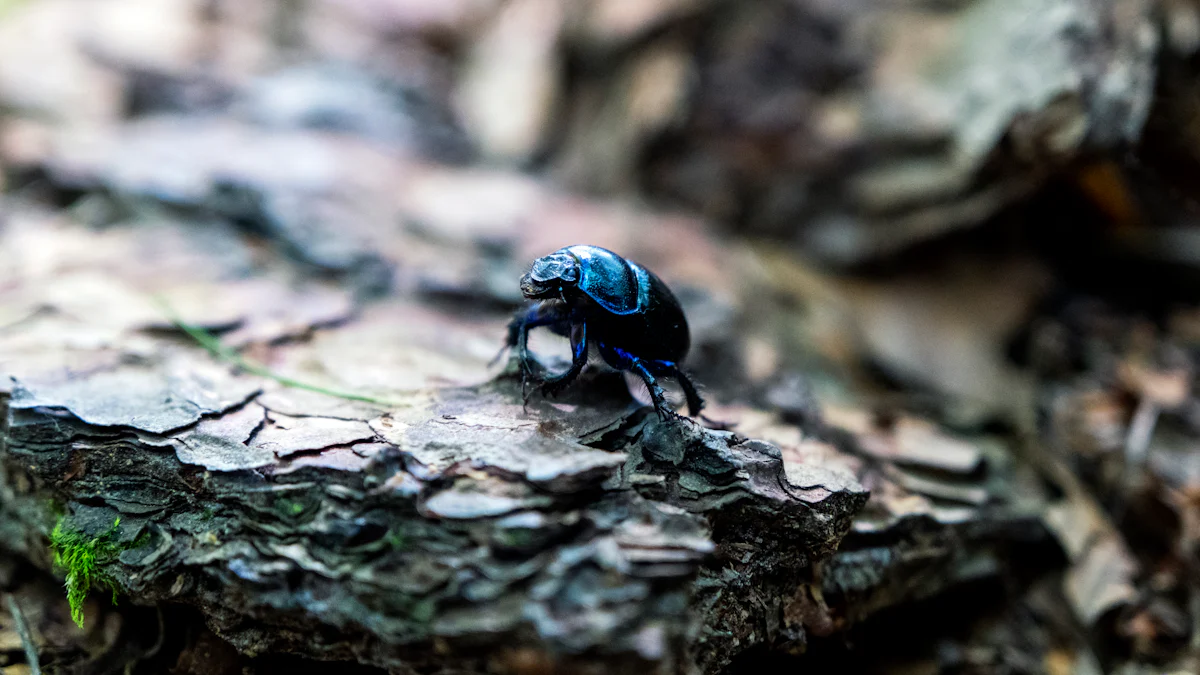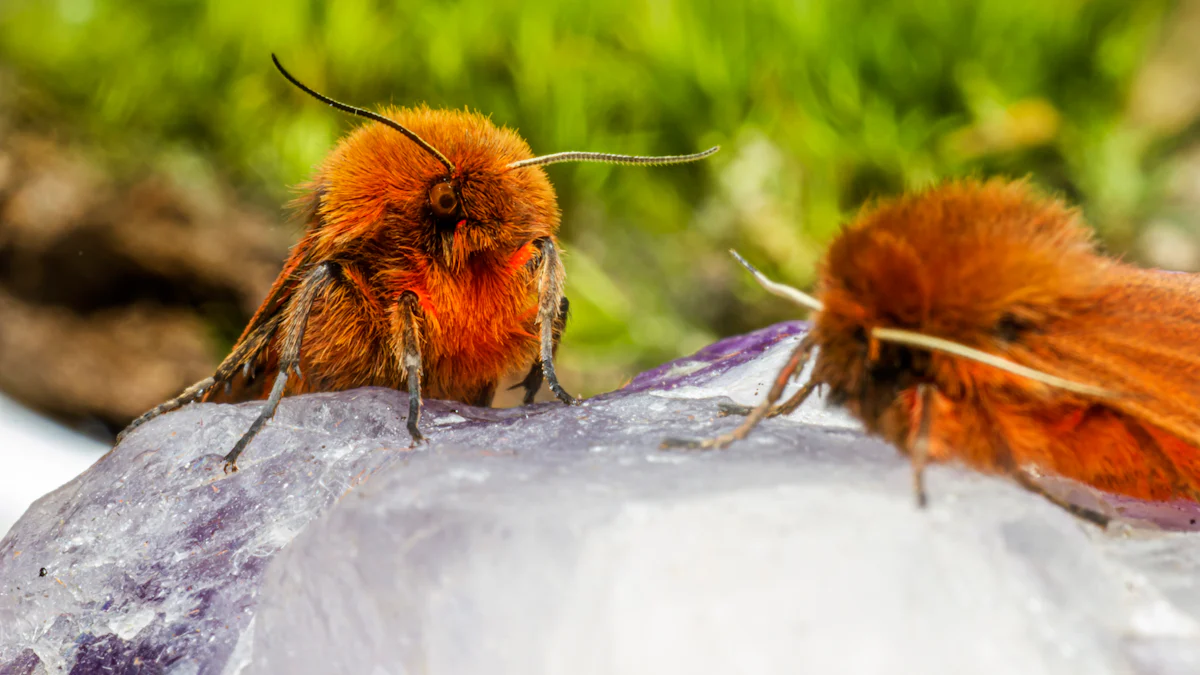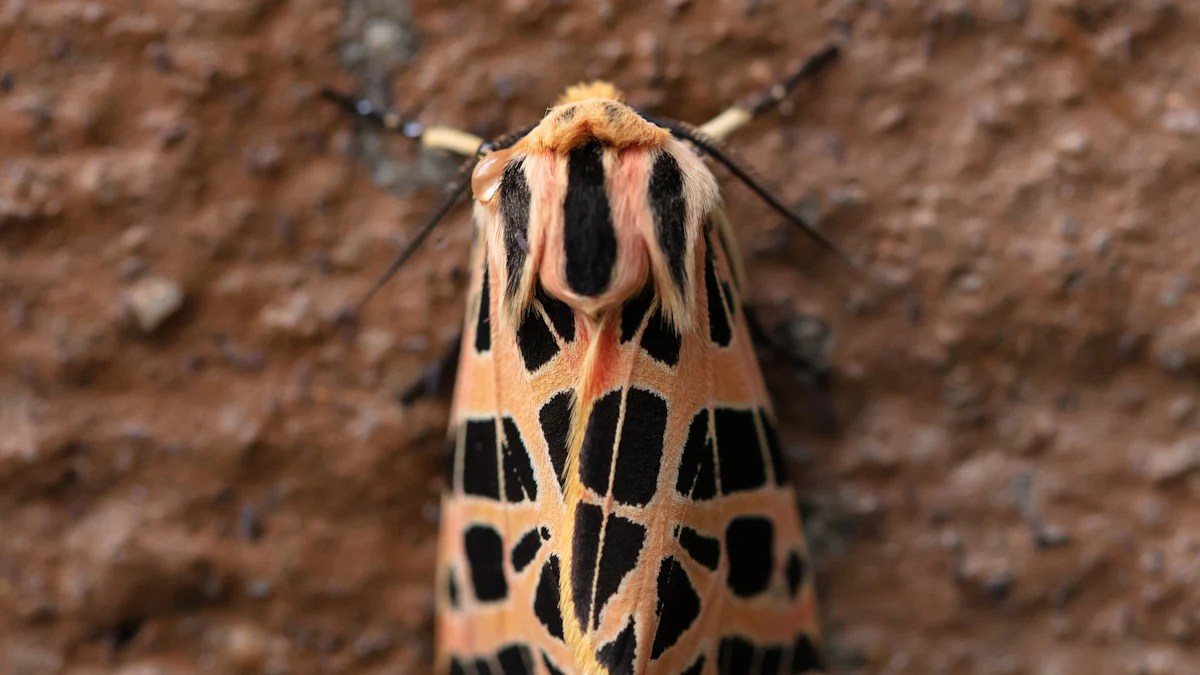
Choosing the right drying method for mealworms can make a big difference in the health and happiness of your feathered friends. Mealworms are packed with protein, fat, and essential nutrients that support muscle growth, energy, and overall vitality in birds. However, the drying process can impact their nutritional value and texture. Factors like cost, preparation time, and suitability for bird diets also play a role. For example, methods like microwave drying preserve nutrients effectively while offering convenience. If you want to provide high-quality options like Microwave Dried Super Worm Bird Food, selecting the best drying method is crucial.
Key Takeaways
- Microwave drying is the most effective method for preserving the nutritional value of mealworms, ensuring high protein and fat retention for your birds.
- This drying method is quick and cost-effective, making it ideal for both small-scale and commercial production of bird food.
- Compared to freeze-drying, microwave drying offers similar nutrient retention but at a lower cost and with less energy consumption.
- Oven-drying is a budget-friendly option, but it may compromise the nutritional quality of mealworms due to prolonged heat exposure.
- Sun-drying is eco-friendly but unreliable, as it depends on weather conditions and poses risks of contamination and nutrient loss.
- For bird enthusiasts, choosing microwave-dried mealworms like Microwave Dried Super Worm Bird Food ensures a nutritious, appealing, and safe food source for your feathered friends.
- Consider your priorities—whether it’s cost, convenience, or nutritional quality—when selecting the best drying method for mealworms.
What Are Microwave-dried Mealworms?

Microwave-dried mealworms are a modern solution for bird enthusiasts who want to provide high-quality nutrition to their feathered companions. This drying method uses microwave energy to remove moisture from mealworms quickly and efficiently. The result is a lightweight, shelf-stable product that retains much of its original nutritional value. Unlike traditional drying methods, microwave drying preserves the protein content and reduces fat oxidation, ensuring the mealworms remain a healthy and appealing option for birds.
The Microwave Drying Process
The microwave drying process involves exposing mealworms to electromagnetic waves that heat the water molecules inside them. This heat causes the moisture to evaporate, leaving behind dried mealworms with a firm texture. The process is fast, taking significantly less time than freeze-drying or oven-drying. This speed helps retain more nutrients, such as proteins and essential fats, which are vital for bird health.
Microwave drying also minimizes the risk of microbial contamination. By rapidly removing moisture, it creates an environment where bacteria and mold cannot thrive. This makes the mealworms safer for long-term storage and use. Additionally, the process requires less space and energy compared to other methods, making it a cost-effective choice for producing high-quality bird food.
Characteristics of Microwave Dried Super Worm Bird Food
Microwave Dried Super Worm Bird Food stands out for its superior quality and convenience. These mealworms maintain a high protein concentration, which supports muscle development and energy in birds. The drying process ensures that the mealworms retain their natural color and texture, making them visually appealing to birds.
Another key characteristic is the reduced fat oxidation. Studies show that microwave drying produces mealworms with lower levels of lipid oxidation compared to freeze-drying. This means the fats in the mealworms remain stable, providing a healthier source of energy for birds. The texture of microwave-dried mealworms also makes them easy to handle and store, ensuring they stay fresh for longer periods.
If you’re looking for a reliable and nutritious option, Microwave Dried Super Worm Bird Food delivers exceptional value. It combines the benefits of advanced drying technology with the nutritional needs of your birds, making it an excellent choice for bird enthusiasts.
Overview of Other Common Drying Methods
When it comes to drying mealworms, you have several options beyond microwave drying. Each method offers unique benefits and drawbacks, impacting the nutritional value, cost, and overall quality of the mealworms. Let’s explore three common methods: freeze-drying, oven-drying, and sun-drying.
Freeze-drying
Freeze-drying is a highly effective method for preserving the nutritional profile of mealworms. This process involves freezing the mealworms at extremely low temperatures and then removing the moisture through sublimation. By skipping the liquid phase, freeze-drying helps retain the original shape, texture, and nutrients of the mealworms.
Did you know? Freeze-dried mealworms maintain a high level of protein solubility and vitamin content, making them an excellent choice for bird food.
However, freeze-drying comes with a higher price tag. The equipment required for this method is expensive, and the process consumes significant energy. If you prioritize premium quality and don’t mind the cost, freeze-drying could be a great option. But for those seeking a more budget-friendly solution, other methods may be more suitable.
Oven-drying
Oven-drying is a more accessible and cost-effective method. You can use a conventional oven to dry mealworms by exposing them to consistent heat over an extended period. This method is straightforward and doesn’t require specialized equipment, making it ideal for small-scale or home-based drying.
While oven-drying is affordable, it has some limitations. The prolonged exposure to heat can degrade certain nutrients, such as proteins and vitamins. Additionally, the process may lead to uneven drying, which could affect the texture and shelf life of the mealworms. If you’re looking for a simple and economical method, oven-drying works well, but it may not deliver the same nutritional retention as freeze-drying or microwave drying.
Sun-drying
Sun-drying is the most traditional and eco-friendly method. By spreading mealworms under direct sunlight, you can naturally remove moisture without relying on electricity or equipment. This method is cost-free and sustainable, making it appealing to those who value environmental benefits.
However, sun-drying has significant drawbacks. It depends heavily on weather conditions, requiring consistent sunlight and low humidity. The process is time-consuming and may expose mealworms to contamination from dust, insects, or bacteria. Nutritional loss is also a concern, as prolonged exposure to sunlight can degrade essential nutrients. While sun-drying is a viable option for those in sunny climates, it may not meet the quality standards needed for premium bird food.
By understanding these methods, you can make an informed decision based on your priorities. Whether you value cost, convenience, or nutritional quality, each drying method offers distinct advantages to consider.
Comparing Drying Methods: Key Factors

Nutritional Retention
The nutritional value of mealworms depends heavily on the drying method you choose. Microwave drying stands out for its ability to preserve essential nutrients like proteins and fats. The rapid process minimizes heat exposure, which helps retain protein bioavailability and reduces fat oxidation. This ensures that your birds receive a high-quality food source packed with energy and nutrients.
Freeze-drying also excels in preserving nutrients. By freezing mealworms at extremely low temperatures and removing moisture through sublimation, this method retains vitamins like carotene and vitamin C. However, it may produce lipid oxidation intermediates, which could slightly affect the overall nutritional profile. Oven-drying, on the other hand, exposes mealworms to prolonged heat, which can degrade proteins and vitamins. Sun-drying, while eco-friendly, often results in significant nutrient loss due to extended exposure to sunlight and environmental factors.
If you prioritize nutritional retention, microwave drying and freeze-drying are your best options. Microwave drying offers a balance of nutrient preservation and cost-effectiveness, making it an excellent choice for producing high-quality bird food like Microwave Dried Super Worm Bird Food.
Cost-effectiveness
Cost plays a crucial role when selecting a drying method. Microwave drying offers a cost-effective solution by using less energy and space compared to freeze-drying. The equipment required for microwave drying is also more affordable, making it a practical choice for both small-scale and commercial production.
Freeze-drying, while highly effective, comes with a hefty price tag. The specialized equipment and energy-intensive process make it one of the most expensive methods. Oven-drying provides a more budget-friendly alternative, as it uses conventional ovens and requires minimal investment. However, the trade-off lies in its lower nutritional retention. Sun-drying is the least expensive option, as it relies solely on natural sunlight. Yet, its dependency on weather conditions and the risk of contamination may increase hidden costs in the long run.
For those seeking a balance between quality and affordability, microwave drying emerges as the most cost-effective method. It delivers excellent results without breaking the bank.
Preparation Time and Convenience
Time and convenience are critical factors, especially if you need to prepare mealworms quickly. Microwave drying leads the pack with its fast processing time. The method removes moisture in a fraction of the time required by freeze-drying or oven-drying. This speed not only saves you time but also ensures that the mealworms retain their nutritional value.
Freeze-drying, while effective, is incredibly time-consuming. The process can take up to 24 hours, making it less practical for those who need quick results. Oven-drying requires several hours of consistent heat, which can be inconvenient for large-scale production. Sun-drying is the slowest method, often taking days to complete. It also demands constant monitoring to prevent contamination and ensure even drying.
If you value efficiency and ease of use, microwave drying is the clear winner. Its quick turnaround time and minimal effort make it an ideal choice for preparing high-quality bird food.
Suitability for Bird Food
When choosing a drying method for mealworms, you must consider how well it meets the dietary needs of birds. Birds require food that is not only nutritious but also safe and appealing. The drying process directly impacts these factors, making it essential to select the most suitable method.
Microwave drying offers a balanced solution for bird food preparation. This method preserves essential nutrients like proteins and fats, which are vital for bird health. The rapid drying process minimizes nutrient loss, ensuring that the mealworms retain their nutritional value. Additionally, microwave drying produces mealworms with a firm texture and natural color, making them more attractive to birds. The reduced fat oxidation in this method also ensures a healthier energy source for your feathered companions.
Freeze-drying, while effective in retaining nutrients, may not always be the best choice for bird food. The process creates mealworms with a brittle texture, which some birds might find less palatable. Furthermore, freeze-dried mealworms often come at a higher cost, making them less accessible for regular feeding. However, if you prioritize premium quality and can manage the expense, freeze-dried mealworms remain a viable option.
Oven-drying provides an affordable alternative but has limitations in terms of suitability. The prolonged heat exposure can degrade proteins and vitamins, reducing the overall nutritional value. Additionally, uneven drying may affect the texture, making the mealworms less appealing to birds. While oven-dried mealworms are budget-friendly, they may not deliver the same benefits as microwave-dried options.
Sun-drying, though eco-friendly, poses significant challenges for bird food preparation. The extended drying time and exposure to environmental contaminants can compromise the safety and quality of the mealworms. Birds require clean and nutrient-rich food, which sun-drying may fail to provide consistently. This method is better suited for non-critical applications where quality is not the primary concern.
For bird enthusiasts seeking a reliable and nutritious option, microwave drying stands out as the most suitable method. Products like Microwave Dried Super Worm Bird Food exemplify the advantages of this approach. They combine high nutritional retention, appealing texture, and safety, ensuring your birds receive the best possible care.
Pros and Cons of Each Drying Method
Microwave Drying
Microwave drying offers a modern and efficient way to prepare mealworms for bird food. This method uses electromagnetic waves to remove moisture quickly, preserving essential nutrients like proteins and fats. The rapid process minimizes nutrient loss, ensuring your birds receive high-quality food. Additionally, microwave drying reduces fat oxidation, which keeps the mealworms healthier and more appealing.
One of the biggest advantages of microwave drying is its speed. You can dry mealworms in a fraction of the time compared to other methods. This makes it ideal for those who need quick results without compromising quality. The process also requires less energy and space, making it cost-effective for both small-scale and commercial production.
However, microwave drying has some limitations. The initial investment in equipment may be higher than traditional methods like oven-drying. Additionally, improper use of the microwave can lead to uneven drying, which might affect the texture and shelf life of the mealworms. Despite these minor drawbacks, microwave drying remains a top choice for producing nutritious and convenient bird food, such as Microwave Dried Super Worm Bird Food.
Freeze-drying
Freeze-drying is renowned for its ability to preserve the original shape, texture, and nutritional profile of mealworms. By freezing the mealworms at extremely low temperatures and removing moisture through sublimation, this method retains essential nutrients like vitamins and proteins. Birds benefit from the high-quality food produced through freeze-drying, making it a premium option.
The main advantage of freeze-drying lies in its exceptional nutrient retention. Studies show that this method maintains protein bioavailability and vitamin content better than most other drying techniques. Freeze-dried mealworms also have a long shelf life, making them convenient for storage.
However, freeze-drying comes with significant downsides. The process is time-consuming, often taking up to 24 hours to complete. The equipment required is expensive, and the energy consumption is high. These factors make freeze-drying less accessible for those on a budget. Additionally, the brittle texture of freeze-dried mealworms may not appeal to all birds. While freeze-drying delivers excellent quality, it may not be the most practical choice for everyday use.
Oven-drying
Oven-drying provides an affordable and straightforward way to dry mealworms. You can use a conventional oven to expose mealworms to consistent heat, removing moisture over several hours. This method is accessible and doesn’t require specialized equipment, making it suitable for small-scale or home-based drying.
The primary benefit of oven-drying is its low cost. It allows you to prepare mealworms without significant financial investment. The process is simple and easy to manage, especially for beginners. However, oven-drying has notable drawbacks. Prolonged exposure to heat can degrade proteins and vitamins, reducing the nutritional value of the mealworms. Uneven drying is another common issue, which can affect the texture and shelf life of the final product.
Oven-dried mealworms may not retain the same level of nutrients as those dried using microwave or freeze-drying methods. While this method works well for those seeking a budget-friendly option, it may not meet the quality standards required for premium bird food.
Sun-drying
Sun-drying offers a natural and eco-friendly way to dry mealworms. You can spread the mealworms under direct sunlight, allowing the heat to evaporate moisture over time. This method requires no electricity or specialized equipment, making it an appealing choice for those who prioritize sustainability and cost savings.
However, sun-drying presents several challenges. The process heavily depends on weather conditions. Without consistent sunlight and low humidity, drying becomes inefficient. This method also takes significantly longer than other techniques, often requiring several days to complete. If you live in a region with unpredictable weather, sun-drying may not be a reliable option.
Contamination risks are another concern. Mealworms left outdoors can become exposed to dust, insects, or bacteria. These contaminants compromise the safety and quality of the mealworms, making them less suitable as bird food. Additionally, prolonged exposure to sunlight can degrade essential nutrients like proteins and vitamins. Studies have shown that drying methods involving extended heat or light exposure often result in reduced protein bioavailability and overall nutritional value.
Despite these drawbacks, sun-drying remains a viable option for those in sunny climates with minimal resources. If you choose this method, ensure proper hygiene by covering the mealworms with fine mesh to protect them from contaminants. Regularly monitor the drying process to achieve even results. While sun-drying may not match the quality of microwave or freeze-drying, it provides a sustainable alternative for non-critical applications.
Choosing the right drying method for mealworms depends on your priorities. Microwave drying excels in preserving nutrients, offering speed, and ensuring cost-effectiveness. Freeze-drying delivers premium quality but comes with higher costs and longer processing times. Oven-drying provides an affordable option, though it sacrifices some nutritional value. Sun-drying is eco-friendly but less reliable due to weather dependency and contamination risks.
If you value a balance of nutrition, convenience, and affordability, microwave drying stands out as the best choice. Consider your birds’ needs and your resources to select the method that works best for you.


